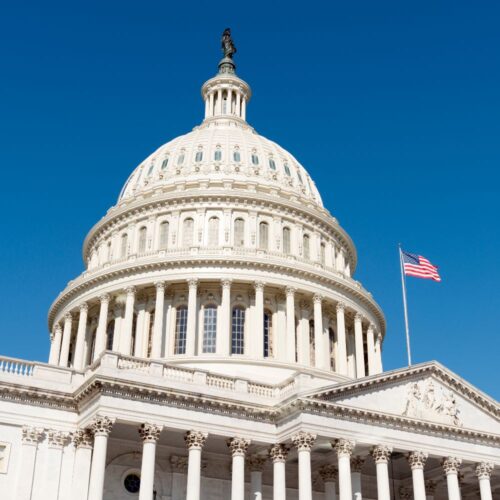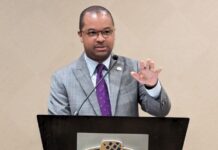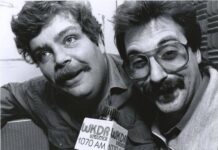
Tuesday was quite a day for AM radio on Capitol Hill as the band saw another bipartisan lift and steamrolled detractors in both houses of US Congress. Broadcasters, legislators, and organizations came together in a united front for the AM For Every Vehicle Act.
At a House Energy and Commerce Subcommittee hearing organized by Chair Cathy McMorris Rodgers (R-WA), Ranking Member Frank Pallone (D-NJ), Subcommittee Chairman Gus Bilirakis (R-FL), and Ranking Member Jan Schakowsky (D-IL), titled “Preserving Americans’ Access to AM Radio,” Midway Broadcasting Corporation CEO Melody Spann-Cooper represented the NAB to advocate for the importance of AM radio.
Her testimony underscored the crucial role AM radio plays in delivering news, sports, and cultural content to 82 million Americans, particularly in emergencies. The AM For Every Vehicle Act would direct the National Highway Traffic Safety Administration to issue a rule requiring AM radio inclusion without extra fees in all cars made or sold in the US.
Spann-Cooper, who is based in Chicago, said, “Chicago is located in the center of the country and once seemed tornado-resistant. But as the country’s weather patterns have shifted, tornadoes have touched down in surrounding collar counties. Our stations are able to deliver up-to-the-minute safety information because we are live and local. Moreover, Chicago winters can be brutal. City and county officials rely on us to provide important information on warming and relief centers for those who need it. This information saves lives.”
She was joined by Navajo Nation Executive Director Justin Ahasteen, who emphasized the indispensable role of AM radio for Native American communities. Ahasteen detailed the foundational role of KTNN, the Voice of the Navajo Nation, established in 1986 to broadcast vital community announcements in Navajo, especially for elders with limited English proficiency. He highlighted the expansive reach of AM radio, which covers the vast 27,000 square miles of the Navajo reservation – a landmass equivalent to West Virginia – and can even be received from as far as Salt Lake City or Los Angeles under clear conditions.
“AM radio is not just for entertainment,” Ahasteen stated, stressing its utility in public safety. He cited a recent emergency where AM radio was crucial in alerting Navajo citizens about a major interstate closure due to a derailment, potentially saving lives by advising drivers to take alternate routes. Ahasteen contrasted AM’s extensive reach with FM’s limitations, which only extend about 60 miles and often cannot penetrate the geographical barriers of the Navajo Nation.
He explained, “The only real solution is AM radio,” emphasizing its cost-effectiveness and essential role in emergency communications. “Lifesaving information and public information should be readily accessible and not dependent solely on cellular networks, broadband, or satellite subscription-based services,” he urged.
Opponents of the AM For Every Vehicle Act also testified. Consumer Technology Association CEO Gary Shapiro used the hearing to voice shrill opposition to AM/FM radio in general, including his own unsolicited opinions about imposing performance fees on local broadcasters and keeping FM chips out of smartphones.
Alliance for Automotive Innovation CEO John Bozzella offered a more level-headed dissenting approach, extending an olive branch to radio by suggesting workarounds like including portable AM radios in car emergency equipment. However, when asked whether the AAI supported providing AM radio in vehicles for free, Bozzella tipped the automakers’ hand, if only for a moment.
He answered, “AM radio is currently in vehicles for free. We have already committed and will continue to commit to make sure that emergency broadcasts, especially the IPAWS system, which we are big believers in and support greatly, will always be available on multiple platforms for free. There’ll be no need for a subscription to hear an emergency broadcast.”
The remained of the hearing saw the vast majority of the questions directed to and answered by Spann-Cooper and Ahasteen.
NAB President Curtis LeGeyt praised the hearing, saying, “NAB appreciates the leadership of Chair Cathy McMorris Rodgers, Ranking Member Frank Pallone, Subcommittee Chairman Gus Bilirakis (D-NJ), and Ranking Member Jan Schakowsky (D-IL) in organizing this important hearing spotlighting the enduring value of AM radio. As Melody made abundantly clear today, AM radio is vital to communities across the country not only for the cultural, news and sports programming that 82 million American rely on, but also because it is a critical lifeline during public safety emergencies.”
He added, “America’s broadcasters are grateful to the subcommittee members and other lawmakers who have voiced staunch support for preserving AM radio in cars. It’s a lifeline in emergencies and the backbone of the Emergency Alert System. We look forward to continuing our work with all committee members to ensure this vital communications medium remains accessible to listeners across the country.”
Meanwhile on the other side of the Hill, Senators Ed Markey and Ted Cruz took the opportunity to boast the AM Act has found its Senate supermajority with 60 co-sponsors. While not officially announced to the Congressional register, the new support would give the Act a filibuster-proof bubble.
Senator Jerry Moran (R-KS) used the day to formally announced his co-sponsorship for the AM For Every Vehicle Act in the Senate, saying, “AM radios connect rural communities with news, sports, weather and much more. In parts of the country with limited connectivity, AM radios are often the only means to notify residents of tornadoes, snow storms and other dangerous weather. This legislation will help make certain new vehicles are equipped with an AM radio, so that folks in every corner of the country can stay connected to broadcasting and local updates during emergencies.”





